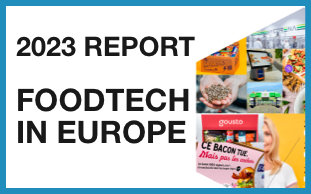Some topics have a funny habit of reappearing every few years in the food innovation ecosystem. Each time, a handful of startups raise money and often fail for the same reasons as their predecessors. However, that’s not always the case, and sometimes they can succeed either because the market conditions have changed or because they bring a new value proposition. One of these topics is hybrid products, which are currently making a comeback with some interesting arguments.
First, what do we mean by hybrids? We can think about meat and dairy products where a significant part of animal proteins are substituted by other proteins (today, plants). However, as we’ll see, there are different applications, notably for alternative proteins.
1 – The traditional hybrids: animal products & plants
Many companies, from startups to leading brands, have tried to launch blends of meat and plants over the years. Let’s say they have not been rewarded with success. There are, however, some interesting exceptions, notably in the US with Perdue’s Chicken Plus nuggets, which are now blends of meat, vegetables, and mycoproteins.
This is the most active category in terms of innovation, with a range of innovators in the space:
- The most common types of players blend plants and meat with very different ratios and marketing: from the obvious 50% used by the well-named brand Both, or to 90% of plants Choppy.
- Another emerging type of player is represented by Mush Foods with its blends of mycelium developed to be mixed with different kinds of meat or fish. It directly targets foodservice players with an argument on price.
A focus on the players who survived long enough to raise money and have actual clients point in an obvious direction: foodservice. For fast food restaurants and school canteens alike, having these products, which can reduce the price of meat and increase the amount of vegetables (for children) without removing anything to the taste, is a clear winner.
Consumers don’t know how to “read” these products and their complex messages. If you want to reduce your meat consumption for health and environmental concerns, it seems more straightforward to take one plant-based burger and one meat burger instead of two hybrids.

2 – The new hybrids: reducing “challenging” ingredients by plants
Hybrids go further than meat and plant blends. If the idea is to substitute a part of a key ingredient by plants, for reasons such as health, environment or cost, this can be applied to many things beyond meat. We can identify many companies which are developing alternatives to sugar, cocoa or coffee using plants. Some of them, notably for sugar and chocolate do not intend to be full substitutes but to enable brands to create hybrids. This is notably the case for sugar where replacing part of it with a compatible sweetener can help to receive a better “score” in countries with a mandatory nutritional display.
Another example is chocolate, with some startups such as Choviva developing a chocolate alternative which was used alongside “real” cocoa by Lindt in a limited edition.
We expect to see more and more of these “undisclosed” hybrid products created by brands with he help of B2B companies and startups. The simple use of 10 or 20% of their ingredient in a recipe will be able to improve a “score” and to create difference with the competition. This could be compounded by the emergence of nutritional scores (again, using a limited portion of plant substitues could reduce the impact of having “real” chocolate or coffee in your recipe).
3 – The future hybrids: animal-free products & plants
For startups using technologies such as cellular agriculture, hybrid products also make a lot of sense: their ingredients will be extremely expensive in the beginning and blending them with plants can help to make them affordable to the consumer.
That’s why many of them are already mentioning blends of animal-free meat or dairy ingredients and plants in their projects. This is notably the case of Wilk (cellular agriculture, breastmilk) which presented an hybrid yogurt with cultivated fat and plants or SciFi (cellular agriculture, meat) which says that its 90% plant-based hybrid beef will be soon on the market.
So, as I said at the beginning, some ideas come and go again and again. This time, it seems that hybrid products are here to stay. That’s an area where we are spending more and more time with clients discussing the best way to present them to the consumers and also which type of hybrid makes the most sense. As I often say when journalists ask me what the future of food will look like: “it will look exactly the same as what we know today, however, what’s inside the ingredients will be very different”. And in these ingredients, hybrids will become strategic. That’s why experimenting with them, and even taking the risk to fail, is also becoming strategically important for players seeking a place in the future of food.







